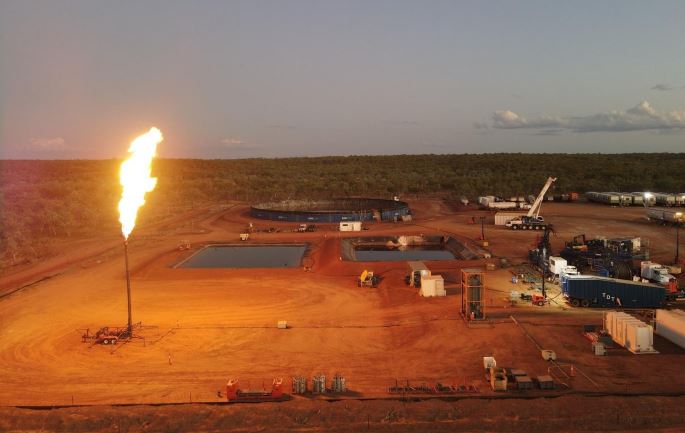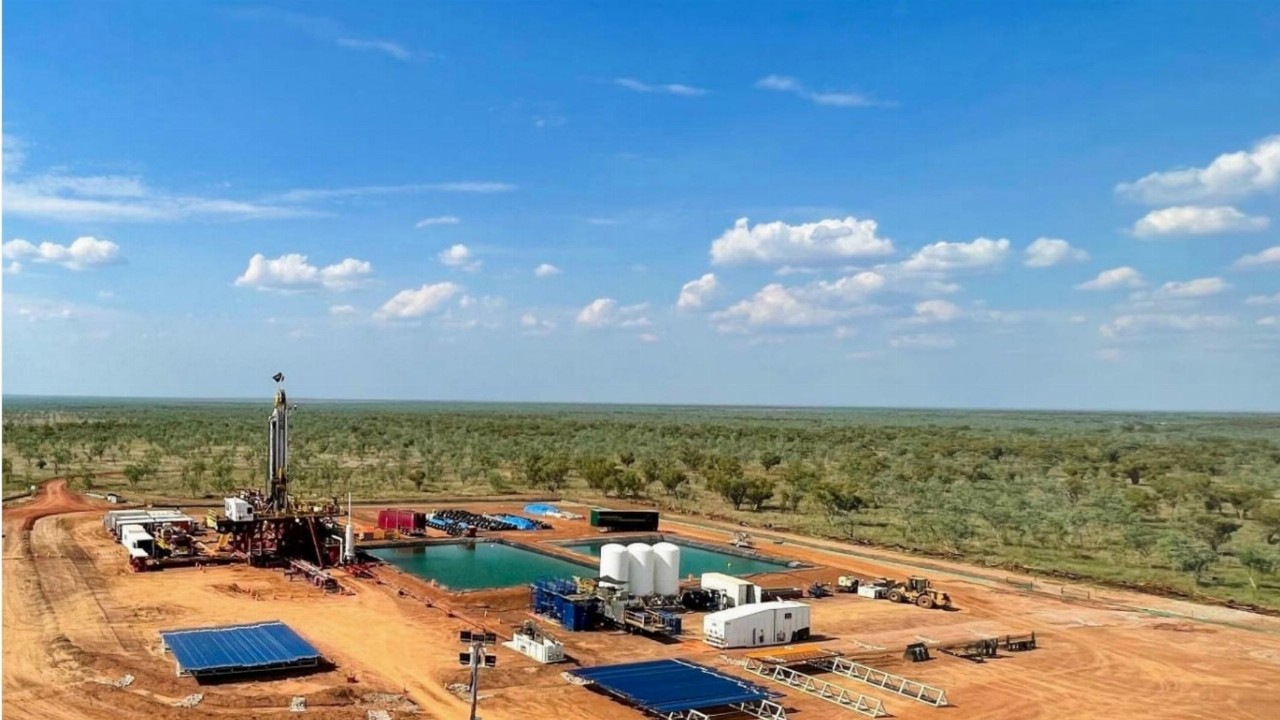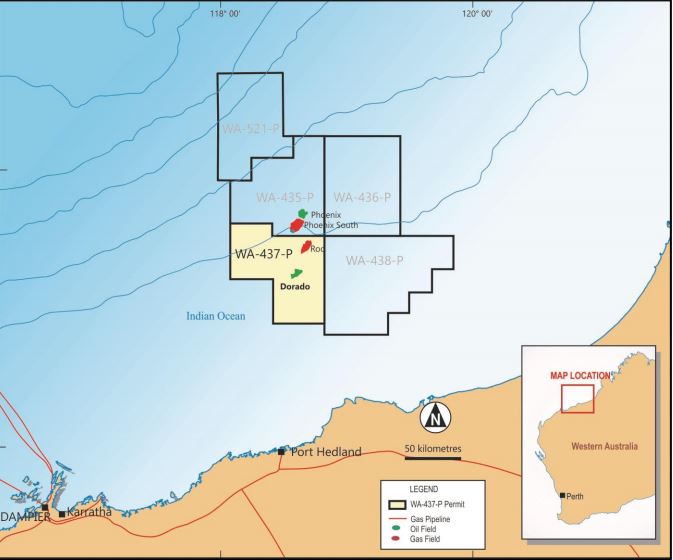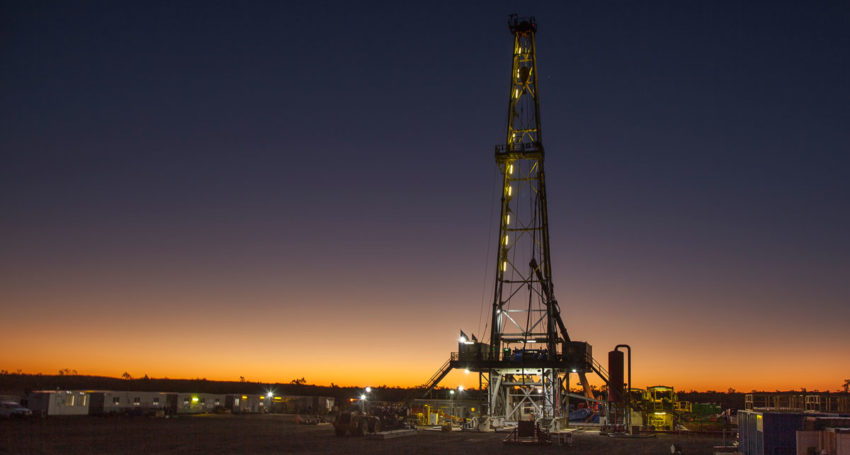The Carpentaria-2H (C-2H) well has continued to deliver strong production flow rates with minimal declines for Empire Energy Group in the Betaloo sub-basin of the Northern Territory.
Empire Energy said extended production testing had continued at the well, located in its 100% owned and operated EP187 tenement, with gas flowing at an average rate of 2.6mmscf/day over the first 13 days and a normalised rate of 2.8mmscf/day per 1000m horizontal section.
The well had been shut-in for two days to replace the hydraulic stimulation wellhead with a flow testing wellhead and to monitor pressure build-up. Empire Energy said that the formation pressure had built very quickly to 1,275psi from 185psi before the shut-in, which indicated “excellent reservoir connectivity”.

Following the shut-in the well recommenced production at 11mmscf/day before returning to a stabilised rate of 2.5mmscf/day for the last seven days. Empire said that modifications to the C-2H flowback pipework undertaken during the shut-in would allow the testing to continue when Carpentaria-3H drilling commences on the same well paid later on in the third quarter of 2022.
Earlier, the company said it had been thrilled with the initial flow testing results from Carpentaria-2H.
The Sydney-based explorer said flowback from C-2H has progressed, with 27.8% of placed fluids recovered and water rates declining as the well continued to clean up.
“It is particularly encouraging that C2H was able to “clean up” (i.e. lift the injected fluids through the well bore to surface) through 4 ½” casing without the need for installation of smaller diameter 2 7/8” production tubing or any artificial lift assistance such as nitrogen enhancement,” the company said.
Gas flow from C-2H commenced on 5 August 2022 at significant but unmeasurable rates due to slug flow1. Measured gas flow commenced at 10am on 7 August 2022 and had stabilised at an average rate of 2.6 mmscf per day across the stimulated horizontal section of 927 metres (a normalised rate of 2.8 mmscf per day per 1,000 metres) with minimal decline in production rate seen to date over the first 91 hours.
Empire Energy Managing Director Alex Underwood was delighted with the outcome and commented: “This is an outstanding result for Empire and our shareholders, and a historic moment in the advancement of the Beetaloo Basin. To our knowledge, this is the highest sustained gas flow rate of any well drilled in the Beetaloo Basin to date.
“The primary goal of the Carpentaria-2H stimulation and flow testing program is not to achieve maximum flow rates but rather to assess which of the four fluid systems trialled (crosslink, HVFR, hybrid and slickwater) is likely to provide the best production performance in the Beetaloo Basin’s shales and to optimise our completion methodology. Our successful stimulation of 21 stages using these various fluid systems and the placement of the entire planned quantity of proppant in those stages was a crucial first step.
“Since then, strong and stable gas production rates, coupled with slowing water production, have given the Empire team enhanced confidence that we are rapidly approaching demonstration that the project is commercially viable, particularly given the significant cost advantage compared to other parts of the basin.
“We don’t yet know which of the 21 stages is giving us the strongest production rates, and therefore which fluid system will drive optimal production and cost performance in development scenarios. We will gather and analyse this data in the coming weeks and months. However, our preliminary view is that it is highly likely that some stages are generating more production than others.
“These learnings, to be incorporated into our completion design for Carpentaria-3H, are likely to drive even stronger production rates in that well and future wells, consistent with the learning curves that were achieved across the major US shale basins.”
Empire successfully placed 6,283,200 pounds of proppant across the 927 metre (3,041 foot) stimulated horizontal section, representing proppant concentration of 2,066 pounds per foot.
Empire is testing four different fluid systems. The trialling of systems included the successful placement of seven slickwater stages without ‘screening out’ which represents a first for any operator in the Beetaloo Sub-basin. Slickwater stimulation fluids may have significant positive cost reduction benefits in a future development scenario.
Empire expects that there will be differing rates of production across the 21 stages because of the fluid systems and perforation strategies tested, which will be determined by 11 gas tracers and 17 water tracers that have been placed across the C-2H horizontal section.




